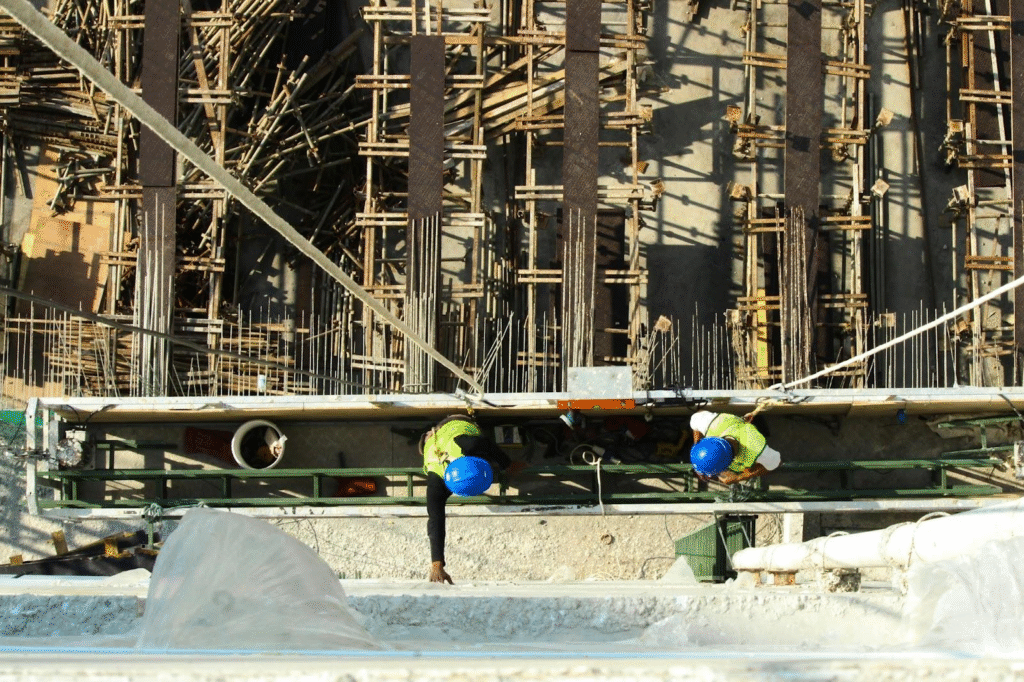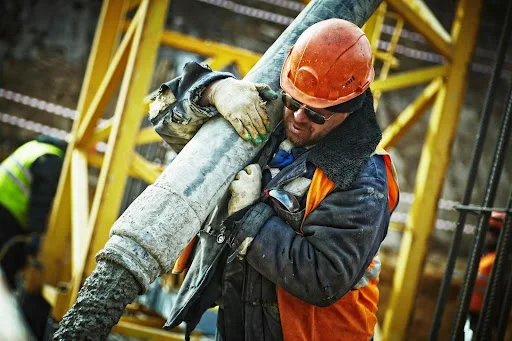Introduction
The construction industry has always balanced ambition with responsibility. As skylines expand and cities evolve, ensuring that projects are delivered safely and sustainably has become as important as achieving striking design outcomes. In Brisbane, a city defined by rapid growth and architectural ambition, safety is no longer a secondary concern—it is integral to the very foundations of design and construction for Architectural Practice.
This shift is particularly visible in the way architects engage with construction incident management. Incident reporting, once considered the sole responsibility of site managers or contractors, is now being embraced as a shared duty across the project lifecycle. Forward-thinking practices like Marchese Partners are demonstrating that safety considerations can be embedded into design decisions, while digital tools such as BuildPass make reporting and communication more efficient than ever.
In this article, we explore how the role of the Brisbane architect extends beyond aesthetic design into the vital realm of safety and incident prevention.
From Design Vision to Site Safety: Why Architects Influence Incident Management
Why Incident Reporting Matters on Modern Construction Sites
Construction sites are inherently complex environments, bringing together multiple trades, heavy equipment, and intricate timelines. Despite rigorous planning, risks remain. This is why incident reporting is central to construction incident management. Recording near misses, hazards, and actual incidents helps create a feedback loop that reduces the chance of repeat mistakes, builds accountability, and strengthens safety culture.
For architects, awareness of these reports provides invaluable insight into how their designs function in the real world. Decisions made in the design studio—such as the placement of access points, the choice of materials, or the sequencing of construction activities—can directly influence the likelihood of incidents on-site. By engaging with incident data early, architects can mitigate risks before they manifest.
The Architect’s Role in Promoting Safety from the Design Stage
The traditional perception of an architect as solely responsible for form and function is evolving. Today, the Brisbane architect is increasingly a collaborator in risk reduction. Integrating safety considerations into planning stages not only safeguards workers but also ensures compliance with regulatory frameworks.
Architects can design with clear workflows in mind, minimise hazards linked to structural complexity, and provide layouts that enable safe access during both construction and long-term use. Their drawings and specifications, when informed by incident data, become blueprints for safer worksites as much as for built form.
Lessons from Brisbane’s Evolving Urban Landscape
Brisbane’s rapid development provides lessons in balancing speed, innovation, and safety. Large-scale projects—from infrastructure upgrades to mixed-use precincts—are delivered under tight deadlines, with multiple stakeholders involved. This context makes incident reporting even more crucial.
When Brisbane architects work alongside builders and adopt proactive incident reporting systems, they help create safer work environments while maintaining project momentum. In a city undergoing transformation, integrating safety into design has become a necessity, not an option.
Step into a world where creativity meets limitless thinking on related post.
How Brisbane Architects Are Embedding Safety into Design
Marchese Partners’ Approach to Human-Centred and Safe Design
Marchese Partners, an architectural practice with a strong presence in Brisbane, is known for its human-centred approach to design. Their work highlights how architectural choices can enhance not only lifestyle and aesthetics but also safety and wellbeing. For instance, careful consideration of accessibility, circulation, and structural systems supports both the construction phase and long-term building use.
By aligning their design philosophy with the principles of construction incident management, practices like Marchese Partners demonstrate that safety can be embedded without compromising architectural integrity.
Collaborative Workflows Between Architects, Builders, and Safety Teams
Safety in construction thrives when communication flows freely between all parties. Architects, builders, and site safety managers each hold unique perspectives. By sharing incident data and discussing potential hazards early, risks can be anticipated and minimised.
For a Brisbane architect, this collaborative workflow ensures design decisions are informed by on-the-ground realities. It also promotes accountability, reducing the risk of incidents being overlooked or repeated.
Balancing Aesthetic Vision with Safety Regulations
Every architect faces the challenge of balancing creativity with compliance. While regulations set minimum safety standards, proactive architects aim higher by integrating safety into the design narrative itself.
In Brisbane’s fast-paced construction environment, architects who prioritise construction incident management can deliver projects that are not only beautiful but also resilient and safe. This balance strengthens client trust and enhances the reputation of the architectural profession.
Technology’s Role in Construction Incident Management

Digital Tools for Real-Time Incident Reporting (BuildPass Features)
Digital innovation is transforming the construction industry, and tools like BuildPass are at the forefront. BuildPass provides streamlined, mobile-first solutions for construction incident management, enabling real-time reporting of hazards, near misses, and incidents directly from site staff.
For architects, these insights are invaluable. A Brisbane architect can review reported issues, identify design-related risks, and use the information to refine future projects. Technology bridges the gap between design intent and construction realities.
Leveraging Data Insights to Prevent Recurring Hazards
Incident reporting systems don’t just collect data—they create actionable insights. Patterns in reported incidents highlight recurring issues, whether related to material handling, site access, or construction sequencing.
By engaging with this information, architects gain a feedback loop that empowers them to address risks proactively. This connection between design and site performance reduces costs, prevents delays, and most importantly, protects lives.
Creating Transparent Communication Between Site and Studio
Historically, communication between construction sites and design studios could be fragmented. Digital platforms now enable transparent, timely exchanges of information.
When a hazard is reported through BuildPass, both site teams and architects can quickly understand the context. This transparency ensures the Brisbane architect remains an active participant in safety discussions, reinforcing the profession’s responsibility for safer cities.
Case for Safer Construction in Brisbane
Common Safety Challenges Faced in Brisbane’s Rapid Growth
Brisbane’s growth has spurred an unprecedented volume of construction, from high-density housing to large-scale commercial projects. With this scale comes increased safety challenges—tight deadlines, congested sites, and diverse teams working simultaneously.
Addressing these challenges requires not only strong site management but also active participation from architects who design with safety in mind. Construction incident management provides the framework to anticipate and mitigate these challenges.
How Proactive Incident Management Protects Workers and Communities
The benefits of proactive safety management extend beyond construction teams. Safer sites reduce disruptions to neighbouring communities, prevent reputational damage, and foster public trust.
For the Brisbane architect, engaging with incident reporting demonstrates a commitment not just to design excellence but to the broader responsibility of safeguarding people and place.
Examples of Integrating Safety Protocols into Local Projects
In Brisbane, safety-conscious projects often integrate digital reporting platforms, collaborative workflows, and design reviews focused on hazard minimisation. For example, site access points designed with worker flow in mind reduce congestion-related risks, while thoughtful staging of construction activities prevents overlaps that could cause incidents.
By incorporating insights from incident reports, architects help deliver projects that stand as exemplars of both design and safety.
Final Thoughts: Building a Safer Future Together
Architects as Catalysts for Safer Cities
As the custodians of design, architects hold significant influence over how safe construction sites and final buildings can be. By actively engaging with construction incident management, architects in Brisbane are playing a pivotal role in shaping safer cities.
The Importance of Embedding Safety in Every Blueprint
Safety should not be treated as an afterthought or a compliance checkbox. Embedding safety into every stage of the architectural process ensures risks are identified early, mitigated effectively, and continually monitored through incident reporting systems like BuildPass.
The Next Step for Brisbane’s Architecture and Construction Industry
For the Brisbane architect, the next frontier lies in fully integrating digital reporting, data insights, and collaborative workflows into standard practice. This cultural shift will ensure that as Brisbane grows, it does so with a commitment to both design excellence and human safety.
Explore inspiring paths that lead to innovation and bold ideas on Management Works Media.






